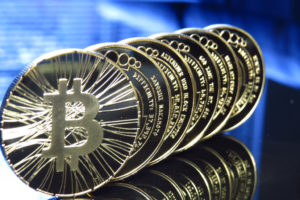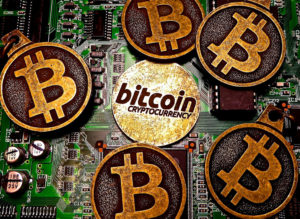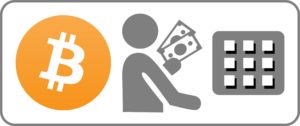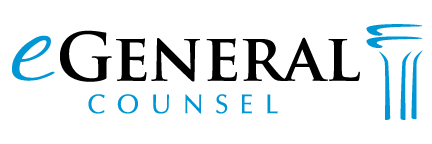Bitcoin and cryptocurrencies have gone in and out of fashion since being introduced in late 2008. A new twist has recently come to the fore, the Initial Coin Offering (ICO), which has been used to raise over $1 billion in capital in the U.S. An ICO is a form of crowdfunding utilizing cryptocurrencies such as bitcoin. Cryptocurrencies are created using blockchain technology, where an electronic ledger is created and maintained in a network of computers. Transfers of the currency are maintained in the electronic ledger, and protected by cryptology. The most well known are the Bitcoin and Ethereum blockchains, which are used to create and track transactions in bitcoin and ether, respectively. The coins or tokens are often traded through cryptocurrency exchanges.
 In an ICO, a company issues tokens for a new cryptocurrency to fund a new project, usually a blockchain and new cryptocurrency business. The tokens are sold either for actual currencies, such a U.S. Dollars, or more established cryptocurrencies, such as bitcoin.
In an ICO, a company issues tokens for a new cryptocurrency to fund a new project, usually a blockchain and new cryptocurrency business. The tokens are sold either for actual currencies, such a U.S. Dollars, or more established cryptocurrencies, such as bitcoin.
The U.S. Securities and Exchange Commission (SEC) takes the position that “depending on the facts and circumstances of each individual ICO, the virtual coins or tokens that are offered or sold may be securities.” A good summary of the SEC’s position is in its July 25, 2017 Investor Bulletin on ICOs.
Onthat date, the SEC issued a more formal report that details its investigation of whether federal securities laws were violated by Slock.it, a decentralized autonomous organization (DAO), or its intermediaries or co-founders. It was determined by the SEO that the tokens the DAO issued are securities under the 1933 Securities Act and 1934 Securities Exchange Act. The SEC advised those who would be utilizing a blockchain-enabled means or distributed ledge for raising capital to take the appropriate steps to ensure they are in compliance with the federal securities laws of the U.S. However, at this time, the SEC decided it will not be pursuing an enforcement action.
For some time now, the SEC has been keeping an eye on the increase in ICOs, and for very good reason. It was reported by the New York Times that this year $1.1 billion has been raised by decentralized organizations, foundations and companies selling digital tokens or coins that are created and then disseminated through the use of blockchain technology or distributed ledgers. Their promoters have characterized nearly all of those token sales as sales of currencies or digital assets, instead of sale of securities, and haven’t been registered in the U.S. as securities.
 Legal experts who have watched the ICO phenomena unfold have wondered and debated whether some of the digital tokens may have enough independent functionality for their sale to be considered a sale of securities. The theory was that the tokens have independent value and that the pre-sale of articles that are useful that will allow operation of the blockchain platform or one that hasn’t been built yet.
Legal experts who have watched the ICO phenomena unfold have wondered and debated whether some of the digital tokens may have enough independent functionality for their sale to be considered a sale of securities. The theory was that the tokens have independent value and that the pre-sale of articles that are useful that will allow operation of the blockchain platform or one that hasn’t been built yet.
The SEC Report identifies a specific set of circumstances where the SEC believes it causes the sale of token to constitute a securities sale under U.S. securities law.
The Report contains a number of interesting conclusions and findings:
- The SEC did not have any difficulties determining that that that promoter of the DAO and tokens was Slock.it. This is evident by the Report stating that the founders of Slock.it launched a website for describing and facilitating the DAO token sale, communicated with the public on the DAO token sale could be participated in, solicited media attention through posting updates on online forums and websites, and retaining the right for choosing the “curators” for determining what proposals that DAO token holders would vote on.
- As discussed in this blog post, a wide variety of investment contracts will be treated as securities if the scheme involves an investment of money in a common enterprise with profits to come solely from the efforts of others. When this “Howey” test was applied (SEC v. W.J. Howey Co, (1946) and also SEC v.Edwards (2004)), it was found by the SEC that the investors in the DAO relied on the entrepreneurial and managerial efforts of Slock.it, along with the co-founders and DAO curators for managing the DAO and generating profits. That was sufficient enough for satisfying the Howey test element that requires that profits would be derived from managerial or entrepreneurial efforts of others, that are separate from investor efforts.
- The SEC did not explore of question of whether or not the DAO was considered to be an “investment company,” falling under the 1940 Investment Company Act, Section 3(a). However, in the Report the SEC did state that those using virtual organizations should consider what obligations they hand under the Investment Company Act.
- Recordings of Slock.it presentations and demonstrations at technology conferences were reviewed by the SEC to determine that the DAO had been intended as for-profit purposes and the tokens were compared to purchasing shares in a company and then receiving dividends. Examining these types of materials and records isn’t surprising for attorneys dealing with SEC investigations. However, for entrepreneurs thinking that their ICO whitepaper is going to the definite and sole document that characterizes their tokens, it might be news to them.
- A warning shot was fired by the SEC to the exchanges where these token are traded. It was found by the SEC that the exchanges trading DAO token appeared to satisfy the criteria for a securities trading system that is regulated by the Exchange Act. It makes it unlawful for any exchange to execute transactions in a security unless that exchange is registered or exempted from being registered as a national securities exchange.
- In case there were any doubts by anyone, it is made very clear in the Report that whether a token sale is termed an “ICO” or coded within a smart contract will not affect the analysis made by the SEC on whether or not it constitutes a securities sale.
 An Investor Bulletin on Initial Coin Offering was issued by the SEC concurrently with its Report so that investors could be aware of what potential risks are involve in participated in a token sale, which is often called an ICO. The SEC’s Office of Investor Education and Advocacy issued the Bulletin. Its objective was to make investors aware of what potential risks are involved in participating in an ICO. This Bulletin is not a SEC policy statement or legal interpretation.
An Investor Bulletin on Initial Coin Offering was issued by the SEC concurrently with its Report so that investors could be aware of what potential risks are involve in participated in a token sale, which is often called an ICO. The SEC’s Office of Investor Education and Advocacy issued the Bulletin. Its objective was to make investors aware of what potential risks are involved in participating in an ICO. This Bulletin is not a SEC policy statement or legal interpretation.
As readers of this Report might expect it was stated in the Bulletin that depending on the circumstances and facts of every individual ICO, that the virtual tokens or coins offers or sold might be securities. This also of course might means that depending on the circumstances and facts of each ICO, virtual tokens and coins sold or offered might also not be securities.
Also included in the Bulletin is list of points that should be considered when buying tokens in an ICO. The points are grounded in decades worth of experience that the SEC has had dealing with various securities fraud matters.
